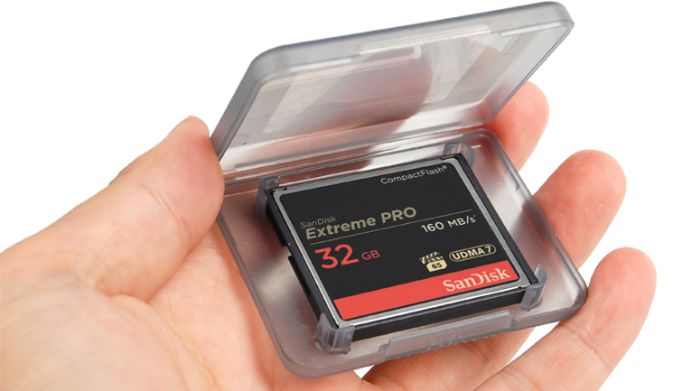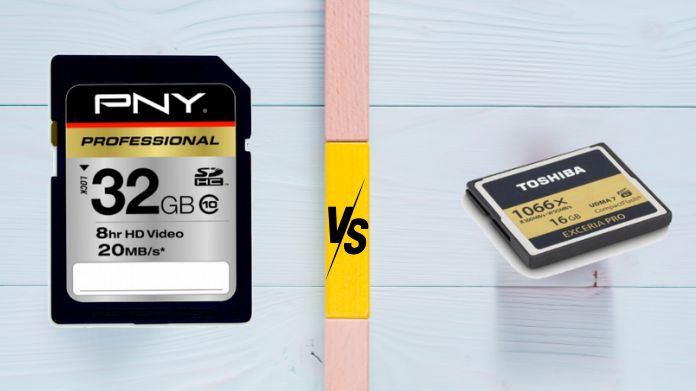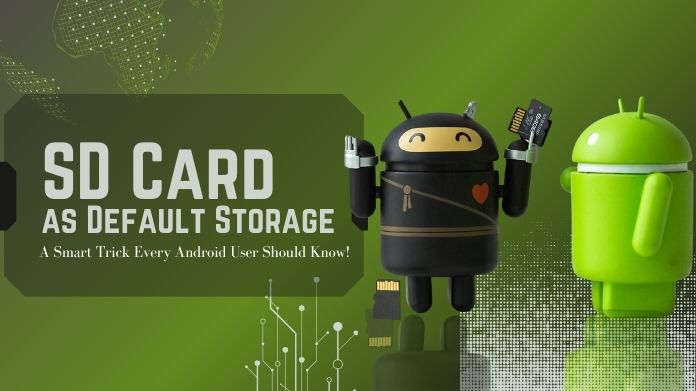Ever found yourself wondering which memory card is the best fit for your camera or device? Memory cards are necessary in the fields of photography and videography, but choosing one can be difficult with so many alternatives.
Should you go with the trusty CF card, or is the more modern SD card, the better option?
Choosing the correct memory card may significantly impact performance, durability, and storage capacity. Whether you’re a casual photographer or a professional, getting the proper card is critical.
We’ll go over the distinctions between CF card vs SD cards in this guide so that you can decide which one best for you.
What is a CF Card?
 The CompactFlash (CF) card has been a staple in the photography world for decades.
The CompactFlash (CF) card has been a staple in the photography world for decades.
It originally appeared in the mid-1990s and immediately became popular among professional photographers and videographers.
These cards are bigger than SD cards and are renowned for their endurance and dependability, particularly in harsh shooting settings.
CF cards are often used in DSLRs, professional video cameras, and even some high-end audio recorders.
Because of their size and build, they can withstand rough environments—think outdoor shoots in harsh weather or fast-paced event photography.
Their durability is one of the primary reasons why experts continue to rely on them. Additionally, CF cards have always been known for their speed and performance.
Because of their capacity to manage huge data, they are an excellent option for RAW photographers and high-definition videographers. For many years, CF cards were the go-to option when reliability was non-negotiable.
What is an SD Card?
On the other hand, the Secure Digital (SD) card is a more modern and widely used option. These cards are much smaller in size, but they pack a lot of power.
SD cards can be found in everything from digital cameras to drones to smartphones. They are the go-to option for both experts and casual users because of their great versatility and compatibility with a variety of devices.
SD cards are smaller and more lightweight, making them easier to carry around. Despite their compact size, they offer impressive storage capacities and fast read/write speeds.
SD cards are a good choice for the majority of users because they come in sizes ranging from a few megabytes to up to 1TB, and it is easy to format SD cards.
Did you know that the majority of consumer devices use SD cards as their primary memory card? They are a quick and affordable solution since they are highly useful for storing everything, including pictures, movies, and gaming data.
CF Card vs SD Card: Key Differences
Now, let’s get into the nitty-gritty of what really sets these two memory cards apart. Here’s a breakdown to help you understand the main technical differences between CF card vs SD cards.

Here’s a detailed breakdown of the key differences between CF card vs SD card in tabular form:
| Feature | CF Card | SD Card |
| Size and Form Factor | Larger and bulkier, typically measuring 42.8mm x 36.4mm | Smaller and lighter, measuring 32mm x 24mm (SD), 15mm x 11mm (microSD) |
| Durability | Extremely durable; designed to withstand physical damage, dust, moisture, and temperature extremes. Ideal for rugged environments like outdoor or extreme sports photography. | Durable, yet more susceptible to physical harm (bending, breaking) because to its tiny size. More vulnerable to external conditions such as water or dust unless engineered to be waterproof or shockproof. |
| Storage Capacity | Larger capacities available, with CF cards supporting up to several terabytes (TB). Ideal for professional use where larger storage is required for RAW images or high-definition video. | Typically available up to 1TB (as of now). This is sufficient for most consumer uses like photography, videography, and storing data in smartphones and drones. |
| Speed and Performance | CF cards (particularly CFexpress) have extraordinarily rapid read/write rates, which frequently reach 1,000MB/s for CFexpress cards. This makes them suitable for high-speed photography (such as sports and wildlife), 4K/8K video capture, and massive file transfers. | SD cards are slower in comparison, though newer versions like UHS-I and UHS-II offer improved speeds. UHS-II cards can reach speeds up to 312MB/s, which is sufficient for most consumer-level photography and videography, including 4K video. |
| Compatibility | Typically used in professional-grade DSLRs, video cameras, and some audio equipment. Fewer devices accept CF cards than SD cards, making them less adaptable across many types of gadgets. | Several consumer products, such as digital cameras, cellphones, drones, computers, and game consoles, are universally compatible with SD cards. Most people find them to be a convenient option due to their extensive use. |
| Cost | More expensive due to their professional-grade performance and durability. CFexpress cards, in particular, can be significantly more costly than SD cards. | Generally more affordable, with options available for every budget. Even high-speed UHS-II cards are often less costly than CFexpress cards, making SD cards an affordable option for the majority of customers. |
| Physical Connection | Uses a pin-based interface, which is susceptible to bending or damage if not handled correctly. To be compatible with current laptops and computers, a card reader is required. | Uses a simpler, more durable edge-connector interface that is less prone to physical damage. Built-in SD card slots are common in laptops, making them easier to use without additional accessories. |
| Form Variants | Primarily comes in one size (CF card), though there are CFexpress variants that offer even faster speeds and higher performance. | Available in multiple sizes: SD, miniSD (less common), and microSD (used in mobile devices and smaller cameras). This makes SD cards more flexible for different types of devices. |
| Longevity | CF cards are known for their long-lasting durability and performance under extreme conditions. They have a longer lifespan in terms of write cycles. | SD cards, though durable, have a shorter lifespan compared to CF cards in terms of write cycles. They may need to be replaced more frequently with heavy use, especially in professional environments. |
| Data Security | Some CF cards have built-in error correction and wear-leveling technologies to ensure data integrity, making them more reliable for professional use. | SD cards also offer error correction, but their smaller size and consumer-level focus may make them less robust for high-demand professional environments. |
With the aid of this thorough comparison, you should be able to understand the key distinctions between CF card vs SD cards and make an informed choice depending on your own requirements.
Which Card is Right for You?
So, should you select CF card vs SD card? The answer depends on how you want to utilize your memory card and what your individual requirements are.
- If you’re a professional photographer or videographer who frequently works in extreme conditions or needs to capture high-speed action, a CF card may be your best bet. Its durability and faster speeds make it ideal for demanding tasks like shooting in RAW format or capturing 4K video.
- An SD card is likely the most convenient and cost-effective choice if you’re a hobbyist or casual photographer who uses your memory card on several devices (such as a smartphone, drone, or digital camera). It is lightweight, portable, and broadly compatible with a variety of devices.
Final Words
Finally, the choice between a CF card vs SD card is entirely dependent on your specific requirements.
Both cards have their advantages, and both may be quite reliable for storing images, movies, and other data.
CF card is the way to go, if you want speed, durability, and a lot of storage space. However, an SD card will work if you want something that is easy to use on a variety of devices, inexpensive, and versatile.
Now that you’ve learned the distinctions, it’s time to choose the best card for your camera, phone, or other device.
Regardless of the memory card you pick, both are solid solutions for recording and keeping your treasured memories!



